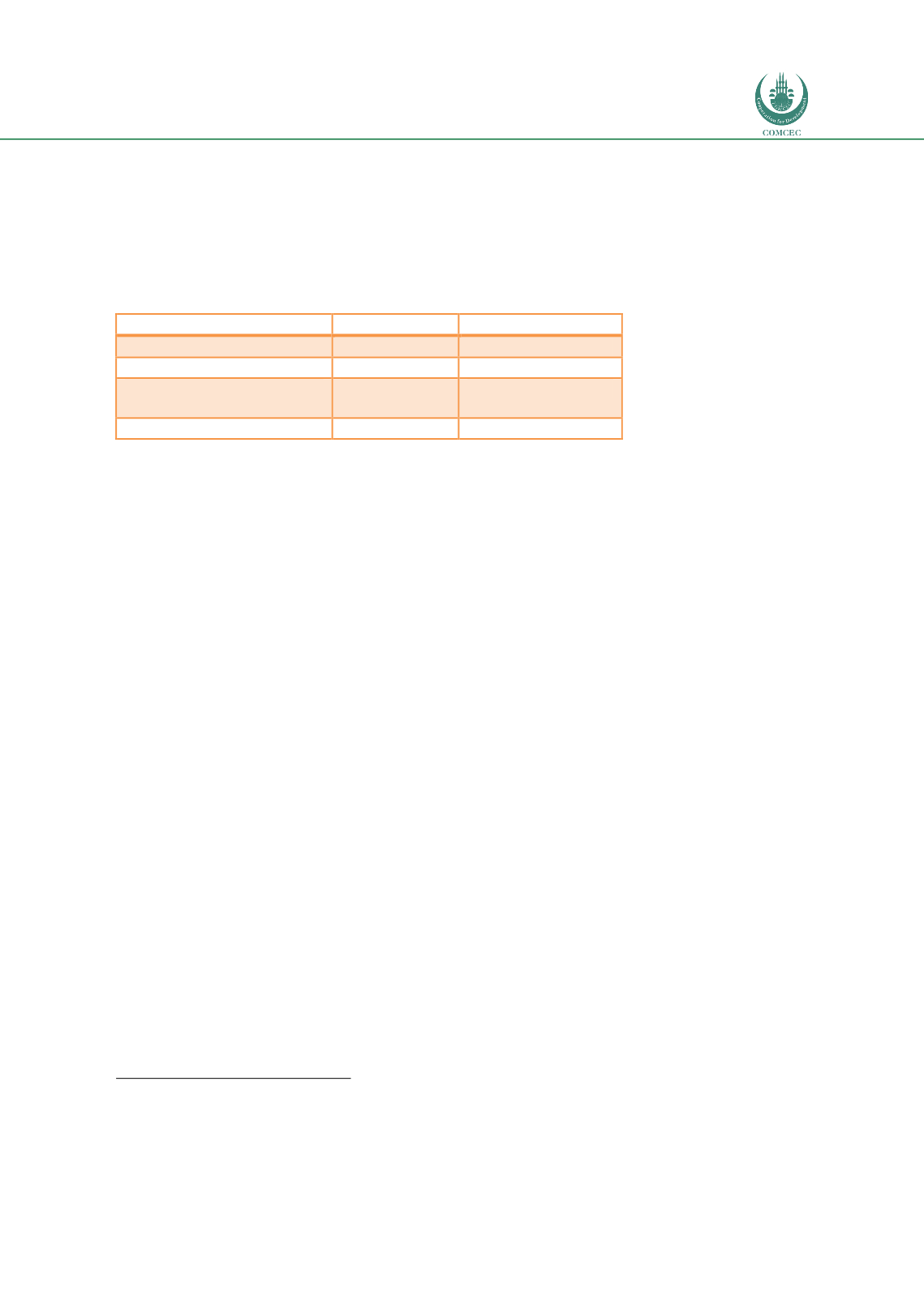

Improving Transnational Transport Corridors
In the OIC Member Countries: Concepts and Cases
161
To compare the result of the dry runs with the transit time and costs on the traditional route
(see
Table 55), comparing these elements for the same origin and destination is crucial. Using
Nhava Sheva – Moscow as the case, means that the transit time and cost for the three routes
should be increased.
Table 58 is an attempt to estimate the additional transit time and cost to
Moscow, using the aforementioned data.
Table 58: Transit time and cost Nhava Sheva - Moscow
Route
Transit time
Transit cost/TEU
INSTC route 1
32 days
USD 3,882
INSTC route 2
44 days
USD 5,765
INSTC route (sea and
rail)
81
26 days
USD 3,550
Traditional route
32 days
USD 3,133
Source: Fimotions (2017).
It is obvious that the INSTC routes do not really offer higher efficiency. In fact, the costs are
higher than the traditional route. One of the inefficient parts is the return of empty containers
to Bandar Abbas, which is a key concern recognized by various stakeholders. This is due to a
lack of information about the Indian market among Russian businesses (Passi, 2017).
However, looking at the trade figures presented i
n Table 54,Russia exports more to India than
the other way around. It is clear that this export volume does not utilize the INSTC routes.
Activating the INSTC routes and promoting them among the Russian businesses are clearly one
of the room of improvement.
The transit time of route 2 is much longer than that of the traditional route due to intermodal
transport on the INSTC routes and inefficient border crossing procedures. Loading and
unloading activities when changing transport mode, obviously consume time. The traditional
route involves only maritime transport.
The most efficient route is actually the combination of sea route (Nhava Sheva – Bandar
Abbas) and rail route (Bandar Abbas – Moscow). This is the only INSTC route that can compete
with the traditional route in terms of transit time. The transit cost is more or less the same as
the traditional route. However, a fixed cargo train schedule from Bandar Abbas is currently
absent which makes the rail transport is less attractive.
Low attractiveness of INSTC
17 years after the formalization of the INSTC, this corridor is still facing challenges to make the
corridor more attractive. For the biggest user like Indian forwarders, the Custom
Administration of Iran has already defined a special mechanism to attract them to use the
INSTC (Moghadasian, 2017). With INSTC stamps, the Indian forwarders can pass the green
81
This route consists of sea route (Nhava Sheva – Bandar Abbas) and rail route (Bandar Abbas – Moscow). The transit time
and cost by rail is provided by the Iranian Railways.
















